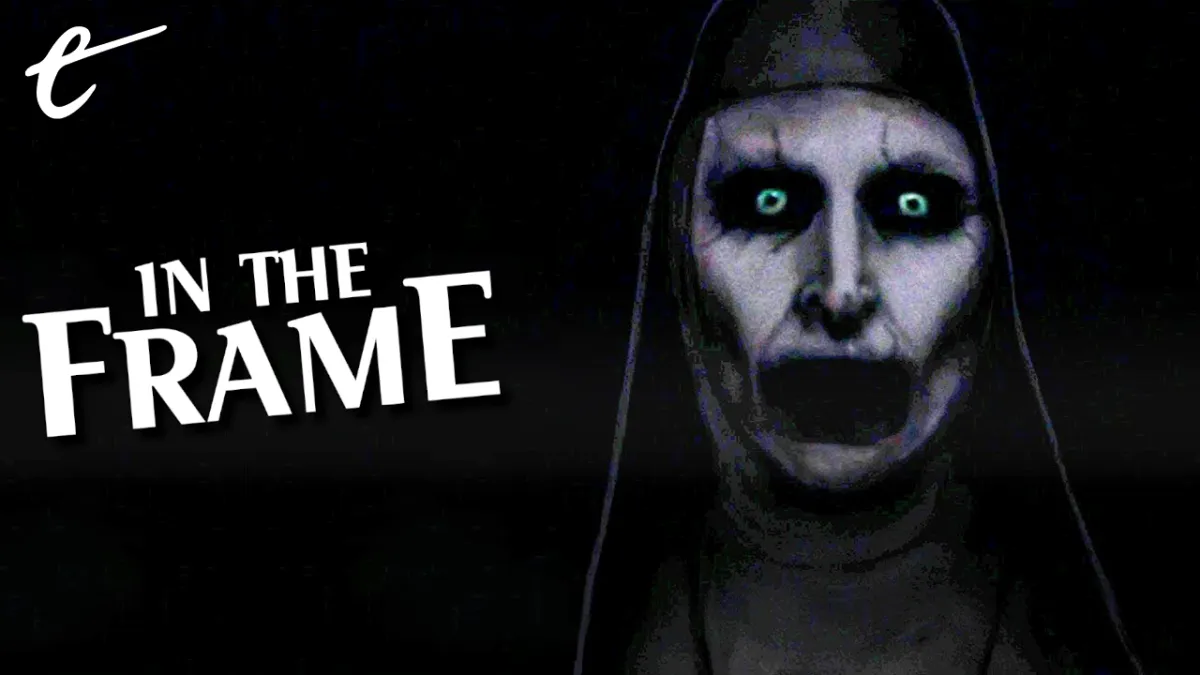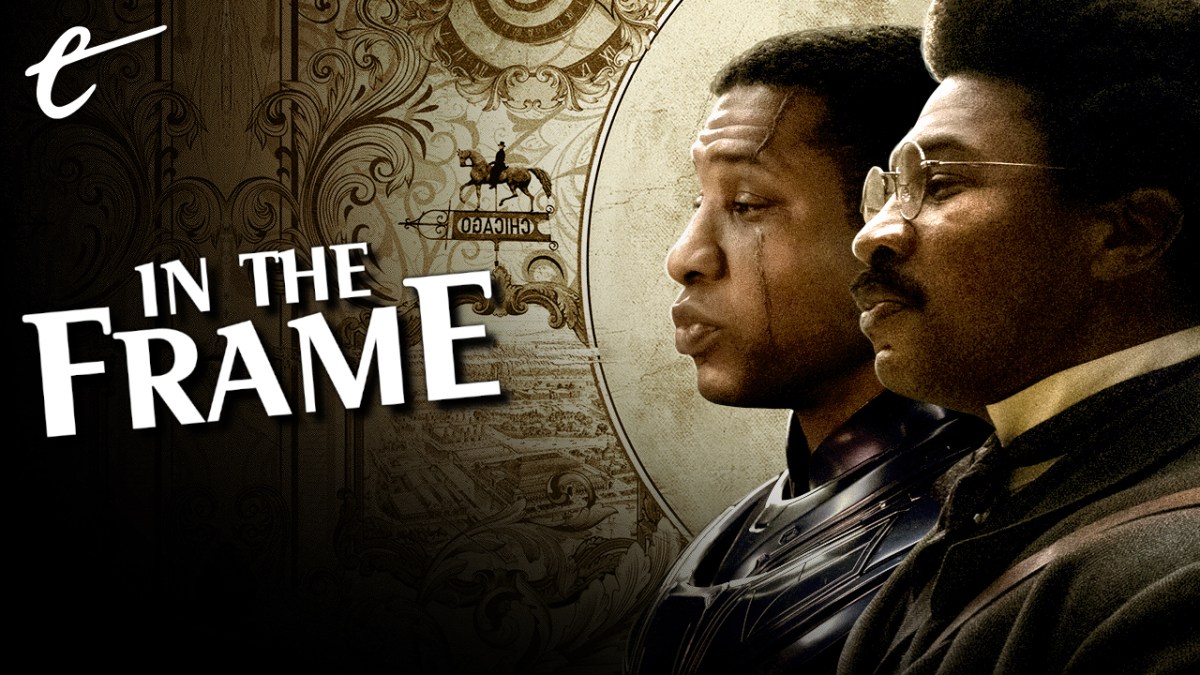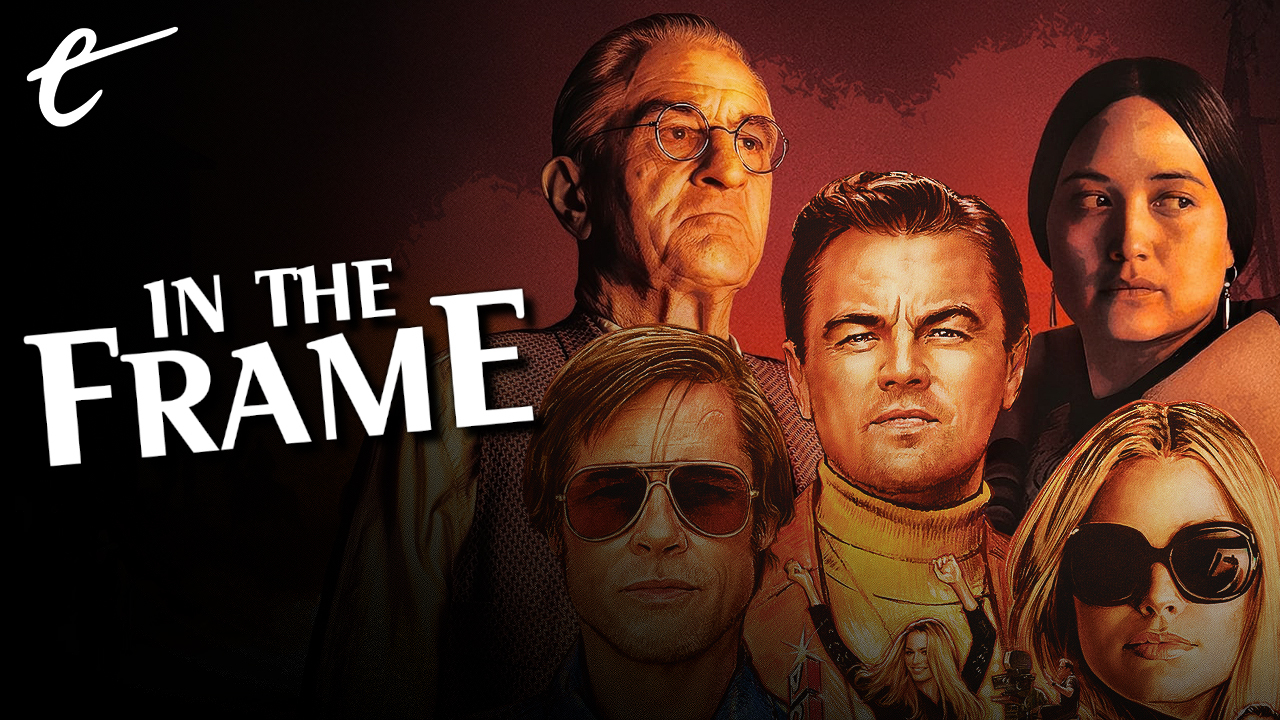The shared universe has been something of a holy grail for Hollywood since Marvel Studios demonstrated how lucrative it could be with the release of The Avengers in 2012.
However, no other studio has managed to build an interconnected franchise with the same degree of success. The past decade is decorated with the husks of misbegotten shared universes: the Dark Universe, the Valiant Cinematic Universe, the Robin Hood Universe. With the release of Aquaman and the Lost Kingdom, Warner Bros. will draw the shutters down on the current iteration of their shared universe of DC characters, only to try again with a new continuity in 2025.
However, the release of The Nun 2 this weekend provides a reminder of one of Hollywood’s most quietly successful experiments in shared universe franchising. Warner Bros.’ Conjuring Universe is very rarely mentioned in the same breath as superhero competitors like the Marvel Cinematic Universe (the MCU), the DC Extended Universe (the DCEU) or the Sony Pictures Universe of Marvel Characters (the SPUMC), but it is an undeniable success.
As the name of this shared universe suggests, it began with James Wan’s The Conjuring. The Conjuring was a PG-13 horror film that was also a massive summer blockbuster. It was released in July 2013, and cleaned up at the box office. It earned $319 million on a $20 million budget. In absolute terms, its box office ranked within the end-of-year top 20, outgrossing more conventional blockbusters like The Wolverine and G.I. Joe: Retaliation. It also had a much more reasonable budget.
Horror has always been a lucrative genre. Budgets are typically reasonable, which makes it easier to turn a profit. More than that, there is always a young and enthusiastic audience for horror movies. However, in recent years, the genre has moved into a space typically reserved for more traditional blockbusters. Blumhouse spent big on the recent Halloween trilogy starring Jamie Lee Curtis and directed by David Gordon Green. They are reportedly doing the same with the new Exorcist trilogy.
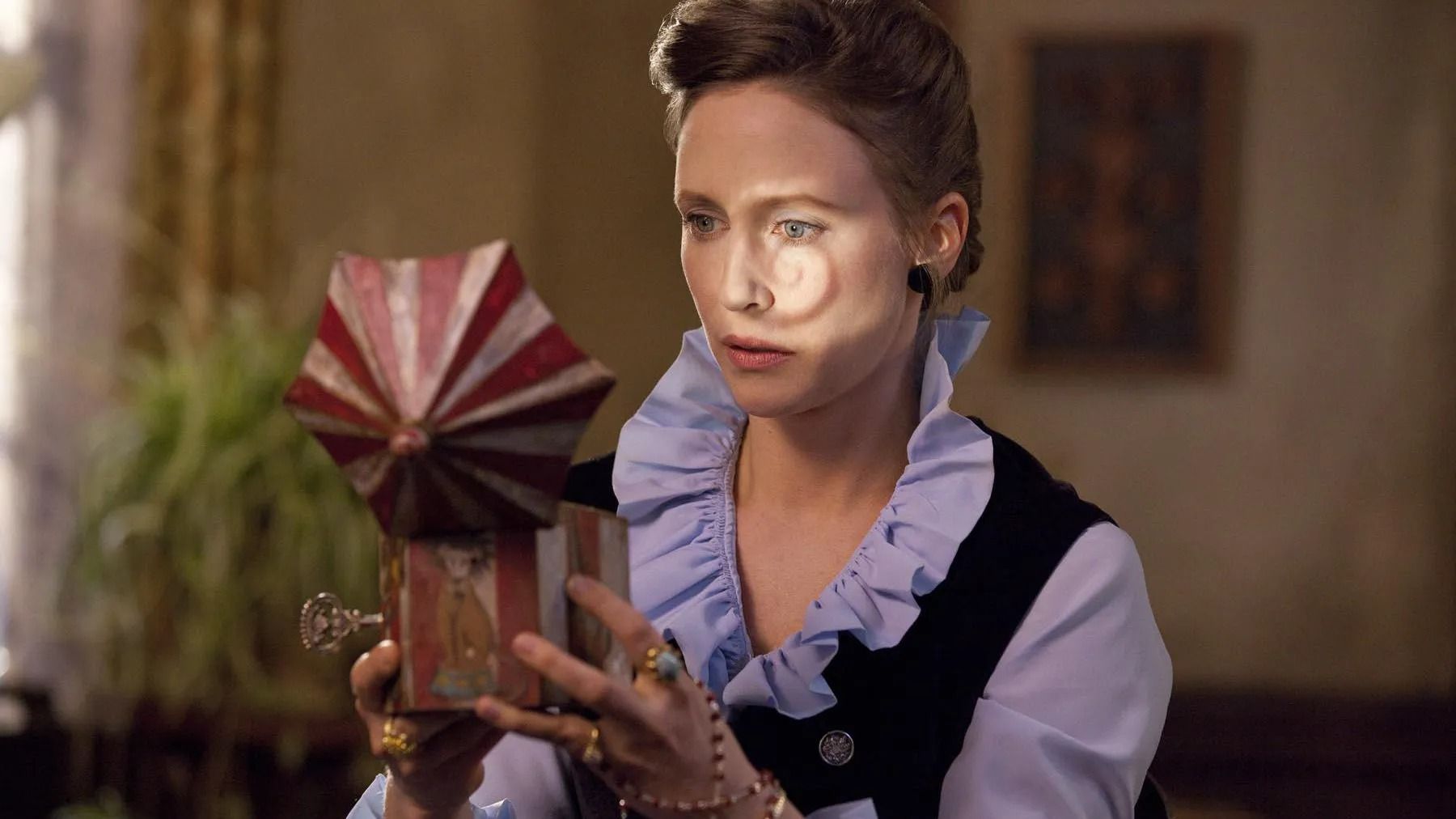
Conjuring director James Wan certainly understands this. The Conjuring was not his first horror franchise. It was not even his second horror franchise. Along with Leigh Whannell, Wan had launched the Saw series, which is releasing its tenth installment this year. Three years before directing The Conjuring, Wan directed Insidious, which recently released its fifth entry. Wan is undeniably a crowd-pleaser. He would go on to direct Aquaman, the only DCEU movie to gross over $1 billion.
The success of The Conjuring all but assured a sequel. While The Conjuring 2 arrived in June 2016, it was beaten to cinemas by John R. Leonetti’s Annabelle. This was a spin-off from The Conjuring, a prequel focusing on a demonic doll that appeared in a glass case in the basement of the house owned by Ed (Patrick Wilson) and Lorraine Warren (Vera Farmiga). It was rushed into cinemas for October 2014, where it returned $257 million on a $6.5 million budget.
When Wan returned to the franchise with The Conjuring 2, fresh from directing Furious 7, he imbued the series with blockbuster energy. The Conjuring 2 doubled the budget of the original to a healthy $40 million. It was released in June 2016, the height of summer. The runtime was a luxurious two and a quarter hours, a length more befitting a superhero epic than a horror sequel. It was also spectacular. The Conjuring 2 is the rare horror film to feature a high-stakes car chase from a train station.
The Conjuring franchise consists of nine films over a decade. Those nine films include two trilogies: the Conjuring trilogy and the Annabelle trilogy. The remaining three films are made up of the two Nun movies and The Curse of La Llorona. Now, this may not sound particularly impressive. After all, horror franchises like the Halloween or Nightmare on Elm Street series tend to churn large numbers of sequels, prequels, and reboots. Sometimes, there are even confusing internal continuities.
However, those franchises tend to operate linearly. They are built around particular brands and characters. Tellingly, when the Halloween franchise tried to get away from Michael Myers with Halloween III: Season of the Witch, the movie was so (unfairly) maligned by fans that the series put Michael Myers’ name in the title of the next three films to reassure potential audiences that these weren’t spin-offs or tangents. Horror franchises traditionally progress in a very linear fashion.
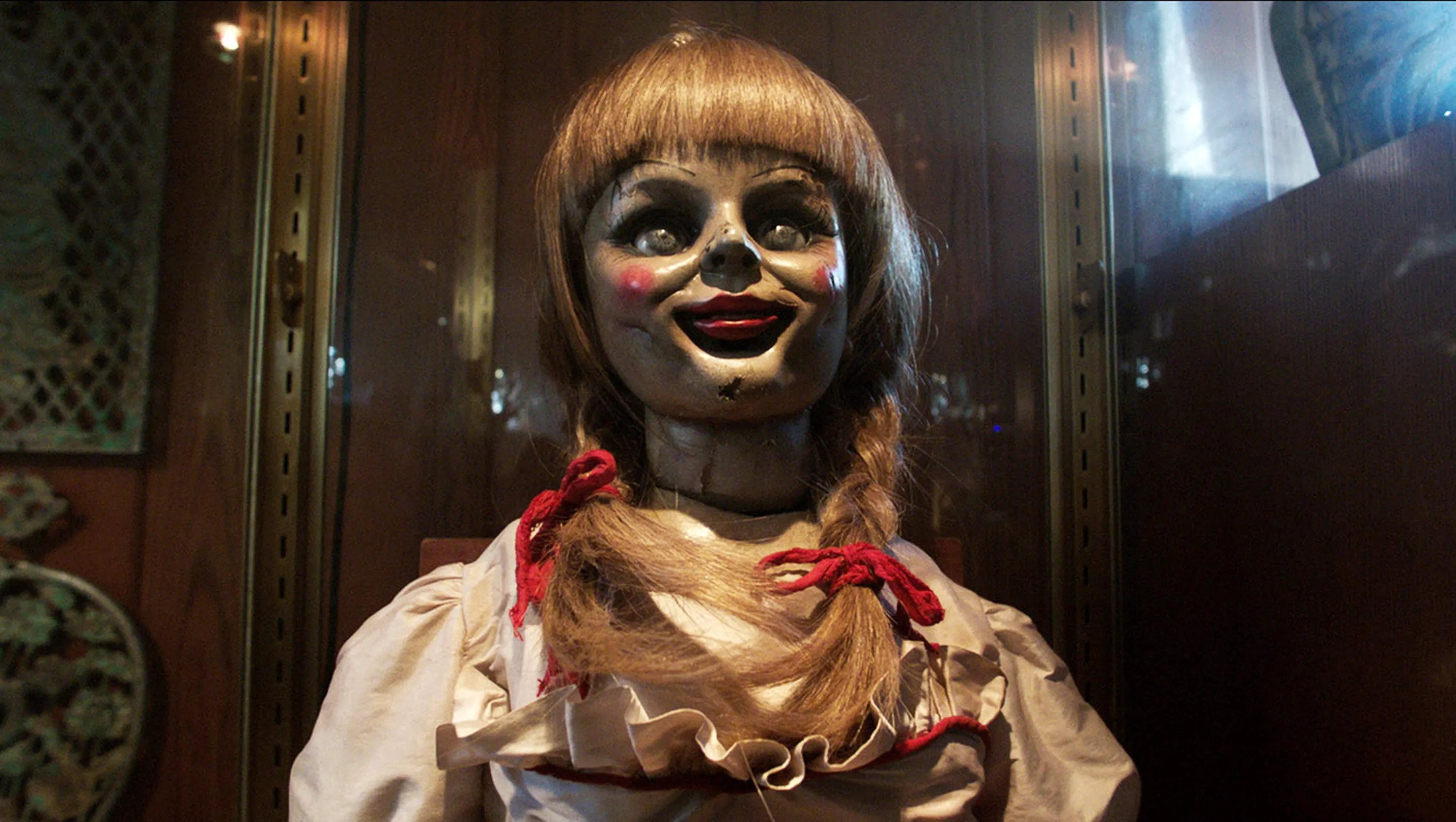
This is true even of series like Saw, which tend to jump back and forth across their own timeline. Saw is another example of a franchise that has undergone a course-correction after stretching too far. The recent Spiral film, starring Chris Rock and Samuel L. Jackson, was the first not to feature star villain John Kramer (Tobin Bell). This was not well-received, and so Saw X director Kevin Greutert has promised that the upcoming Saw X will feature “more [Tobin Bell as John Kramer] than in any other Saw.”
This is what makes the Conjuring franchise so interesting as a point of intersection between traditional horror cinema and modern franchise-building. This is not just a random grouping of distinct films or franchises cynically bundled together under a shared brand. The nine entries in the shared horror universe properly cross over and intersect with one another while also being reasonably self-contained, in the same way that the films produced by Marvel Studios do.
For example, Bonnie Aarons plays the eponymous sister in the two Nun films, but also appears in The Conjuring 2 and Annabelle: Creation. Tony Amendola plays Father Perez in both Annabelle and The Curse of La Llorona. Annabelle Comes Home is basically a stealth entry in the main Conjuring series, situated between The Conjuring and The Conjuring 2, with Patrick Wilson and Vera Farmiga reprising their roles as Ed and Lorraine Warren.
The franchise has a surprisingly detailed and complicated internal continuity. It spans an impressive swathe of history, from The Nun set in 1952 to The Conjuring: The Devil Made Me Do It set in 1981. The franchise is designed so that a casual viewer can dip in and out depending on their personal preference, but it has an impressive amount of lore. The connections might not be quite as overt as the dense web of references that tie together superhero universes, but they are there.
There is even a sense of behind-the-scenes continuity between the films. The Nun franchise stars Taissa Farmiga, the sister of Conjuring lead Vera Farmiga. Gary Dauberman wrote all three Annabelle films as well as directing Annabelle Comes Home, wrote The Nun, and was producer on The Curse of La Llorona. Michael Chaves has directed installments in three of the four franchises, directing The Curse of La Llorona, The Devil Made Me Do It, and The Nun 2.
This franchise has been massively successful for Warner Bros. The first eight films in the series have grossed a total of $2.1 billion on a combined budget of $179.5 million. That’s an 11.7x return on investment. As a point of contrast, the MCU has grossed a total $29.5 billion on a combined budget of $6.4 billion, an appreciably lower 4.6x return on investment. The DCEU has grossed a total of $6.7 billion on a combined budget of $2.5 billion, making for an even more modest 2.7x return on investment.

It’s strange that the Conjuring is never mentioned in these conversations, because it offers an important lesson about the best way to build these elaborate franchises. Horror movies are famously critically maligned and often overlooked for awards consideration. It is the rare genre where there is a clear and consistent dissonance between what critics and audiences respond to. However, by the standards of horror cinema, the Conjuring franchise is remarkably well-reviewed.
The Conjuring, The Conjuring 2, Annabelle: Creation, and Annabelle Comes Home all garnered positive reviews from critics. Even The Devil Made Me Do It came within 5% of a “fresh” rating on Rotten Tomatoes. Audiences were similarly enthusiastic. Ignoring self-selecting and gameable online metrics, CinemaScore offers the best indication of how an audience in a cinema screening reacted to a given movie. Placed in context, the Conjuring franchise has done very well for itself.
“Until the last year or two, a great score for a horror film would be a B-, even when they’re good,” research analyst Harold Mintz explained in 2017. According to Mintz, The Conjuring was the first horror to earn an A-. The Conjuring 2 matched that grade. Allowing for that curve, Annabelle, Annabelle: Creation, Annabelle Comes Home and The Conjuring: The Devil Made Me Do It all scored a “B-“ or higher from audiences via CinemaScore, matching or exceeding Mantz’s “great score” threshold.
In short, while mileage varies and taste is subjective, the Conjuring franchise is largely constructed of well-made horror films. The brand has accumulated audience trust through the quality and relative consistency of its output, particularly considering the rocky relationship that audiences and critics can have with the horror genre. The Conjuring Universe has succeeded in large part because it has – on the whole – produced accessible films that audiences and critics enjoy.
This was also the model employed by the MCU during its early days. Iron Man, Thor, and Captain America: The First Avenger didn’t set the world on fire, but they received positive reviews and built trust with audiences. In the rush to build massive shared universes, many studios have forgotten this, arguably including Marvel Studios itself. The Conjuring remains Hollywood’s second most successful shared universe because it knows that a wall is only as strong as the bricks that comprise it.
Field of Dreams was a ghost story that famously argued “if you build it, they will come.” The Conjuring franchise is a ghost story that adds a lesson for the larger industry around it. If you build it well, they will keep coming back.

